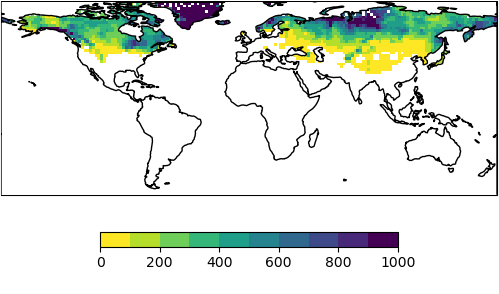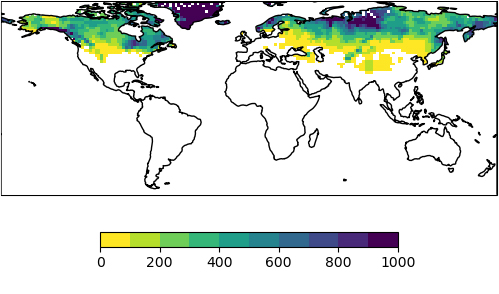Release date: 3/6/2023
The Earth Prediction Innovation Center (EPIC) and the Unified Forecast System (UFS) community are proud to announce the public release of the UFS Land Data Assimilation (DA) System v1.0.0. This is the initial release of this system, which can be used to run the Noah-MP land model in offline mode with an Optimal Interpolation-based snow depth update. This release can be used on a number of NOAA computing systems or in container mode on other computing systems. Future releases will include ensemble data assimilation methods and expanded computing system support.
The Land DA System is an offline version of the Noah Multi-Physics (Noah-MP) land surface model (LSM) used in the UFS via the Common Community Physics Package (CCPP), and it is currently being tested for operational use in GFSv17 and RRFS v2. Its data assimilation framework uses the Joint Effort for Data assimilation Integration (JEDI) software stack, which includes the Object-Oriented Prediction System (OOPS) for the data assimilation algorithm, the Interface for Observation Data Access (IODA) for observation formatting and processing, and the Unified Forward Operator (UFO) for comparing model forecasts and observations.


The offline Noah-MP LSM is a stand-alone, uncoupled model used to execute land surface simulations. In this traditional uncoupled mode, near-surface atmospheric forcing data are required as input forcing. This LSM simulates soil moisture (both liquid and frozen), soil temperature, skin temperature, snow depth, snow water equivalent (SWE), snow density, canopy water content, and the energy flux and water flux terms of the surface energy balance and surface water balance. Its data assimilation framework applies the Local Ensemble Transform Kalman Filter-Optimal Interpolation (LETKF-OI) algorithm to combine the state-dependent background error derived from an ensemble forecast with the observations and their corresponding uncertainties to produce an analysis ensemble (Hunt et al., 2007).
A newly-created User’s Guide is available to provide further information about the Land DA System and instructions for running and testing the system. Data files required to run Land DA are available to the public in the Land DA data bucket. Interested users can get support by submitting a question through GitHub Discussions.

This inaugural Land DA release is a collaboration between the Earth Prediction Innovation Center (EPIC), the Environmental Modeling Center (EMC), and the Physical Sciences Laboratory (PSL). It uses Joint Effort for Data assimilation Integration (JEDI) software developed by the Joint Center for Satellite Data Assimilation (JCSDA) and the CCPP software developed by the Developmental Testbed Center (DTC). Publicly available data is provided via an AWS S3 bucket established as part of the NOAA Open Data Dissemination (NODD) Program.
This release was funded by the NOAA Weather Program Office’s Earth Prediction Innovation Center Program and the National Weather Service Office of Science and Technology Integration Modeling Programs.








